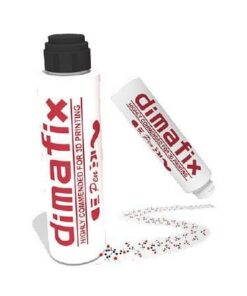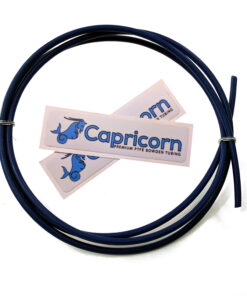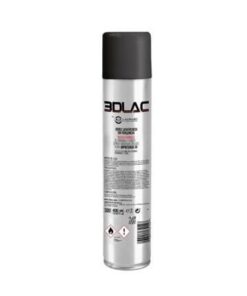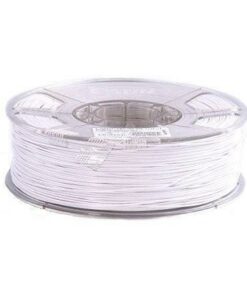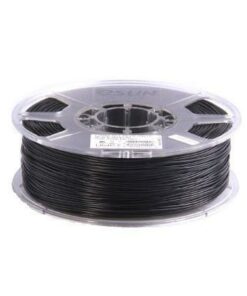3D Printing
Here you will find a great variety of filaments in diferent colors and sizes. PLA, ABS, HIPS, PVA, Flexible, transparent, carbon fiber, wood, metal, technicians …
Read MoreThe Filament for 3D printers is sold in reels, of various sizes, colors, types and with different properties.
3D Filament Sizes
The Filaments for 3D printing can be found in two sizes:
- 1.75mm coils: this is the most common thickness.
- 3.00mm or 2.85mm coils: it is more commonly used in industrial 3D printers. It is also used to provide greater resistance in the printing of some materials.
Before purchasing a filament coil, you should make sure that your 3D printer or extruder supports the size you want.
Types of Filament Coils
PLA
PLA filament (polylactic acid) is one of the most commonly used materials in 3D printers.
Polylactic acid (PLA) is one of the most widely used materials for its ease of use in printing 3D parts. The PLA filament (biodegradable material) is resistant to wear and tear and has a high resistance to heat. This thermoplastic material is well known for its low melting temperature. It deforms very little and does not give off any odour.
PETG
PETG filament (polyethylene terephthalate) is one of the most used materials in 3D printers. It is a very resistant 3D filament. It is a mixture between polylactic acid (PLA) and ABS plastic. To this material has been added Glycol, to form the polyethylene terephthalate (PETG), offering greater durability and resistance as the ABS
Polyethylene Terephthalate (PETG) offers rigidity, durable hardness (like ABS plastic) and ease of use like polylactic acid (PLA)
This type of filaments hardly suffers from warping and does not give off odors. In addition, the PETG filament is, among all the variety of filaments that there are, the one that provides a greater degree of transparency.
ABS
The ABS filament is a thermoplastic derived from petroleum, very resistant to impact (shocks) and where one of its advantages is its easy machining, since it reacts correctly to post-production treatments.
Flexible
in the flexible filaments we can find two varietiess:
- Flexible TPE (Thermoplastic Elastomers) is a elastic material
- Flexible TPU (Thermoplastic Polyurethane) is a more flexible material.
These are plastics with qualities that resemble rubber, enjoying good flexibility and durability.
Do not confuse Flexible with Elastic.
HIPS
The HIPS (High Impact Polystyrene) filament stands out for its properties. It is commonly used to package products in the food industry, or in the casings of CDs or DVDs. It is a biodegradable plastic. HIPS is a material widely used as a support since it easily dissolves in limonene (colorless liquid hydrocarbon).
Other Types of Filament
HTPLA
Proto Pasta HTPLA Filament: This is a PLA filament of the Proto-Pasta brand, which stands out for containing fibers that give a fibrous appearance to the prints. In addition, it has better mechanical properties than conventional PLA.
Nylon
The Nylon Filaments are characterized by the quality in the finish, highlighting its soft and silky touch, its great strength, and also is a good filament to use when you want to get small details.
Other 3D Printing Strand Questions
What is a 3d printer filament?
The 3D printer filament is the material used to create the parts with the 3D printer. There are several types of filament and materials, each with its properties and characteristics. The filament is a fine thread that can have a diameter of 1.75 or 2.85 mm.
What types of filaments can be used in a 3d printer?
In 3D printing, a multitude of materials can be used, such as
- PLA (Polylactic Acid)
- PETG (Polyethylene Terephthalate Glycol)
- Nylon
- ABS (Acrylonitrile Butadiene Styrene)
- Flexible Filament (Thermoplastic Elastomer or TPE and Thermoplastic Polyurethane or TPU)
Discover more types of filament for 3D printing.
How much does a 3d printer cost?
3D printers cover a wide range of prices. The cost of a 3D printer can range from 200 euros (like an Ender 3) to several thousands (like an Ultimaker S5). It will depend on the specifications of each machine.
How is the price of a 3D printer calculated?
The price of a 3D print will vary depending on the material used, amount of material used, time, electricity…
What is the difference between ABS and PLA?
ABS and PLA are two different materials, although both are thermoplastics, ABS comes from non-renewable materials, and PLA comes from organic raw materials rich in starch. Find out more differences between PLA and ABS.
What kind of plastic does the 3d printer use?
A 3D printer uses thermoplastics to create the parts. There are many materials available: PLA, ABS, flexible, PETG, etc… All of them are plastics that melt at temperatures between 100 and 200°C and allow the creation of objects created layer by layer by a 3D printer.

